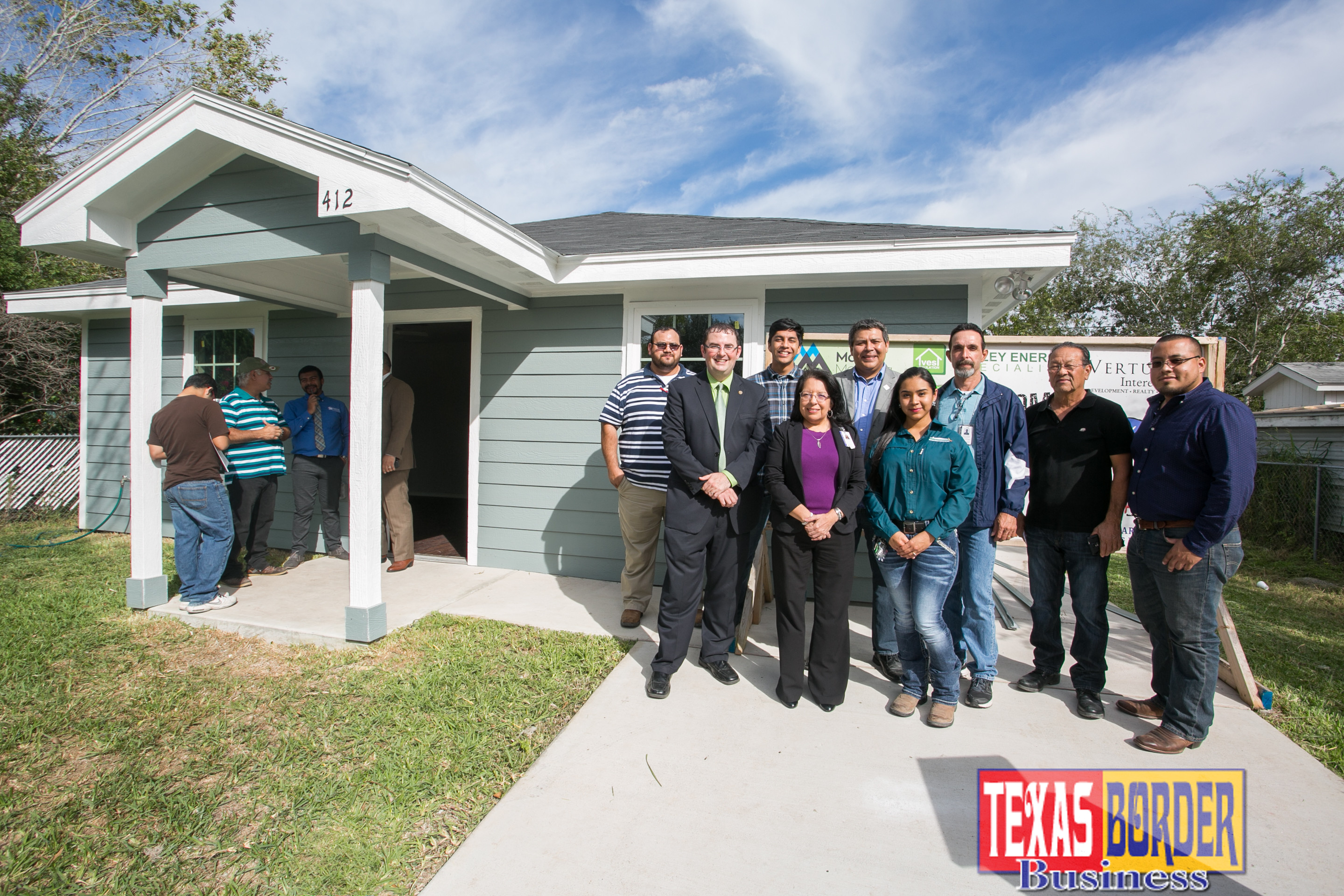
Front Row….L to R: Executive Director for Habitat for the RGV-Wayne Lowry, CNBT Instructor-Irma Rosales, CNBT Student-Jocelyn Martinez.
Texas Border Business
College partners with Habitat for Humanity to construct three homes in impoverished community
MCALLEN, TX (November 28, 2016) – Students at STC reflect a vital mission of the college, placing a strong value in giving back to the community, and taking what they have learned to make a difference in the lives of Valley families.
Throughout the spring and summer, students with STC’s Construction Supervision and Electrician Technology programs spent weekdays, evenings and weekends assisting with the construction of homes for families in need.
Now that construction has finished, South Texas College and Habitat for Humanity joined with families and volunteers to dedicate three houses for residents in rural Alamo on Nov. 22.
“I have to say, having STC as a partner has really increased our capacity to build more houses. Prior to two years ago, we were building about three or four houses a year. Over the last two years, through the wisdom of our board and the generosity of our donors, we have built up to 10 houses a year,” said Wayne Lowry, Executive Director for Habitat for Humanity of the Rio Grande Valley.
“To do that you have to have manpower and partners who are willing to come during the week, on the weekends and dedicate their time to serve in this capacity,” Lowry said. “So, having the partnership with STC has really allowed us to build our capacity, help more families and to expand our program.”
Students in turn received hands-on experience while becoming close to the people they served. Construction students work with various humanitarian groups including Habitat For Humanity, Proyecto Azteca and Buckner International during the construction process.
Students in STC’s Electrician Technology Program also receive experience on the job. After a home is framed, students perform an initial pre-wiring procedure called a “rough-in”, which involves nailing boxes, pulling wire and setting up the electrical board.
“I think South Texas College has a very strong value in giving back to the community,” said Rey Sanchez, Design Building Technology Program Chair at STC. “I would say they dedicated maybe 75 percent of all the supervision during the entire project here. As a matter of fact, in this particular neighborhood we’re in there are a total of four homes. From those four homes, our students were able to work on three. Then we had one home where we had professionals come in and finished this home in about four and a half days. The homes that are built by volunteers usually takes about four and a half months.”
Habitat for Humanity receives applications year-round, and actively seeks low-income families to work with. Homeowners are then responsible for 300 “sweat equity” hours while their home is being constructed. The process then includes community volunteers who help organize the families, and then makes a determination of their eligibility.
More than 250 families applied during this latest series of homes. Of those, 14 applicants were accepted.

“I feel excited. We have been waiting for this for a long time. We’re glad that it’s finally here, and I am still in disbelief that it’s actually happening,” said homeowner Elizabeth Gonzalez. “I used to live in a small two-bedroom mobile home. We wanted something bigger, especially with the new baby. Now we’re going to be more comfortable, and hopefully start a lot of new memories in this new home.”














